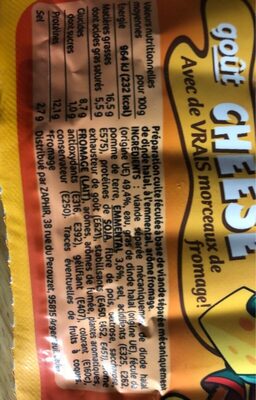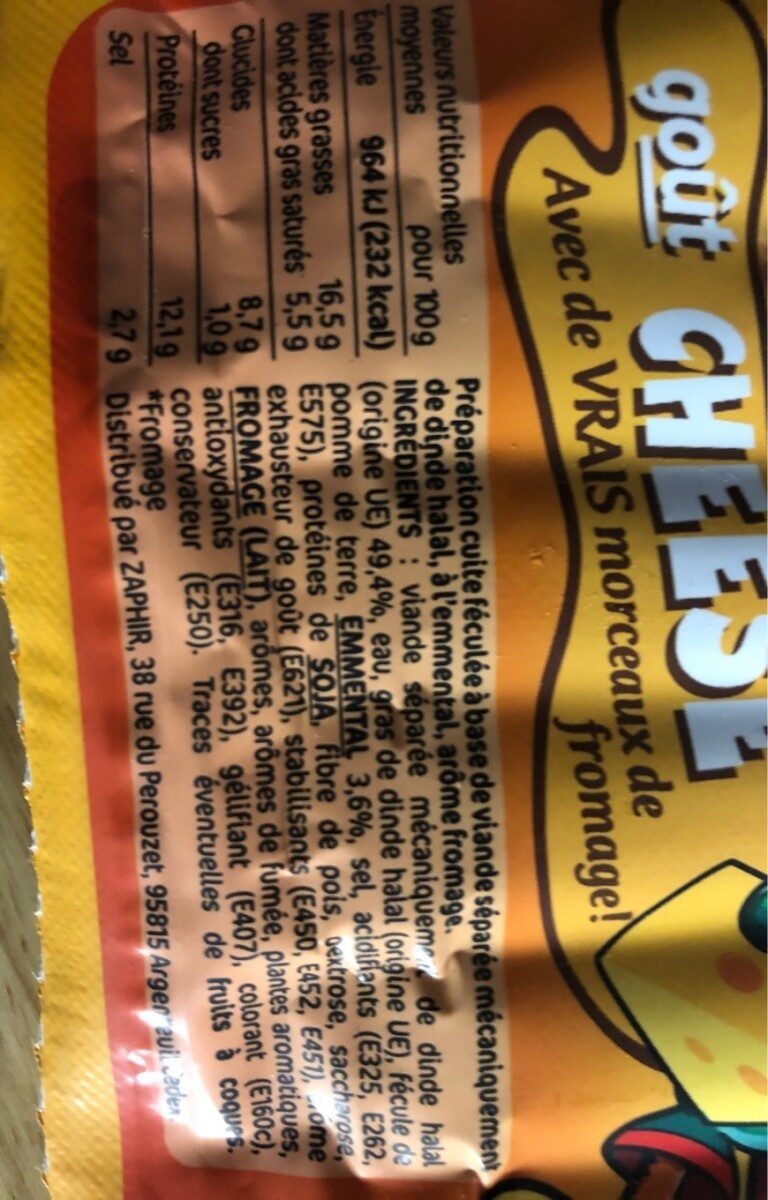Super delice - Isla delice - 350 g
This product page is not complete. You can help to complete it by editing it and adding more data from the photos we have, or by taking more photos using the app for Android or iPhone/iPad. Thank you!
×
Some of the data for this product has been provided directly by the manufacturer AMALRIC / ISLA DELICE.
Barcode: 3512690004956 (EAN / EAN-13)
Common name: Id super deliss' gout cheese 350g dt 20% oft
Quantity: 350 g
Brands: Isla delice
Labels, certifications, awards:
Halal
Countries where sold: France
Matching with your preferences
Environment
Packaging
Transportation
Other information
Preparation: "A réchauffer : - au micro-ondes 800W 1min30 dans le sachet entrouvert - à la casserole : plonger les déliss' 4 minutes dans l'eau frémissante - à la poêle : 5 minutes à feu moyen"
Conservation conditions: A CONSERVER ENTRE 0°C et 4°C
Customer service: ADV, 38 rue du Perouzet 95815 Argenteuil Cedex
Report a problem
Data sources
The manufacturer AMALRIC / ISLA DELICE uses CodeOnline Food to automatically transmit data and photos for its products.
Manufacturers can use the Open Food Facts free plaform for producers to access and complete this data, and to obtain reports, analysis and product improvements opportunities (e.g. better Nutri-Score).
Product added on by kiliweb
Last edit of product page on by org-amalric-isla-delice.
Product page also edited by roboto-app, yuka.V1kwQ1FKWW1qOFlYa2NFeStEalBwbzlVbDZhbFZIdWVLZU1LSWc9PQ.






